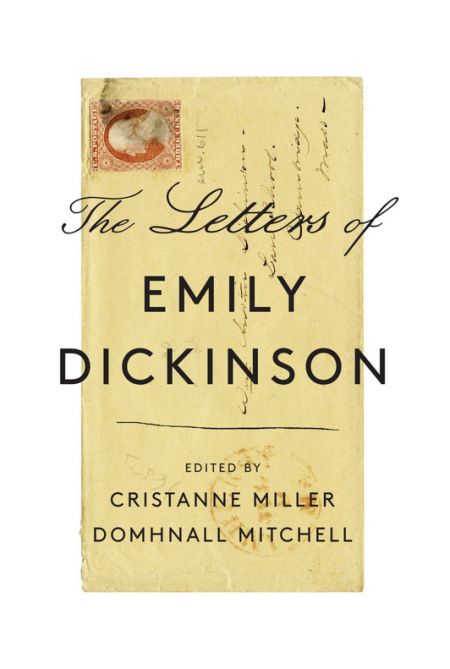
Tess Kelley, Harvard College ’23, reports on a recent talk at Houghton Library.
“A Letter is a joy of Earth — it is denied the Gods,” Emily Dickinson proclaimed in an 1885 letter. In another, she likened a letter to a gun, “harmless because ‘unloaded,’ but that touched ‘goes off.’” To Dickinson scholar Dr. Cristanne Miller, these comparisons reflect the poet’s clear belief in the power of letter-writing.
That power was on full display during “Emily Dickinson's Literary Legacy: Unveiling the Definitive Edition of Her Correspondence,” a recent lecture at Houghton Library that brought Miller to the world’s largest Dickinson archive. The event highlighted the collaborative work Miller, English professor at SUNY Buffalo, and Domhnall Mitchell, professor of 19th-century American Literature at the Norwegian University of Science and Technology, undertook as editors of a newly published volume of Dickinson’s letters. It’s the first comprehensive collection of her letters published since 1958, and includes 1,304 of the poet’s letters, as well as a few from Dickinson’s correspondents.
Dickinson’s letters often reflected events in the world around her, both within her social circle and the world at large. During the Civil War, death and grief crept into the content of her letters, especially when a friend was killed in the war. Yet Dickinson also found humor in death, telling cousin Frances (“Fannie”) Norcross that she had pointed an elderly woman looking for a house in the direction of the cemetery to “spare expense of moving” — an anecdote met with laughs from the audience.
Her letters to Fannie and her sister Louisa (“Loo”) revealed a joyous side of the poet as well: “Life is a spell so exquisite that everything conspires to break it,” she wrote in 1873. Even in her casual correspondence with friends and family, Dickinson maintained the penchant for diction and quick wit of a poet.

The event included a Q&A moderated by Leslie Morris, Gore Vidal Curator of Modern Books and Manuscripts at Houghton. Miller described the eureka moment in which she discovered the Frances Norcross transcriptions of letters Dickinson had sent to her and her sister Louisa. Thought to be lost, they were in fact bound into the 1894 printer copy Mabel Loomis Todd put together for the first publication of Dickinson’s letters.
While their work on the book did not yield completely new discoveries, Miller and Mitchell added almost 300 letters to the previous 1958 volume, including over 200 “letter-poems” without accompanying prose, which were excluded from the 1958 edition.
The pair re-dated and re-ordered the letters, which required them to get creative. For example, they compared a record of Amherst’s weather patterns against Dickinson’s mentions of weather in her letters. Beyond weather, they also used clues such as references to recently published poetry and mentions of flora and fauna. Dickinson’s status as a “magpie” of language, in Miller’s words, allowed them to compare the poet’s letters to information in local newspapers she would have had access to.
Miller and Mitchell sought to correct some aspects of the 1958 edition that they considered out-of-date. They refer to female correspondents using their first names, not their husbands’ names. They also attempted to flesh out Dickinson’s world by including information about domestic workers in her household as well as mentioning the ethnicity/race of people she knew. In their included annotations, they aimed to convey their key conviction that, despite her reputation as a recluse, Dickinson was engaged in the world around her, reading books and newspapers and incorporating what hse learned into her letters.
Dickinson wrote that a letter “feels like immortality.” While she may not have been writing about herself, her words serve as a fitting description of her own letters as well. Dickinson never published her letters, her poems, or her letter-poems, yet she predicted the ways they would live beyond her.